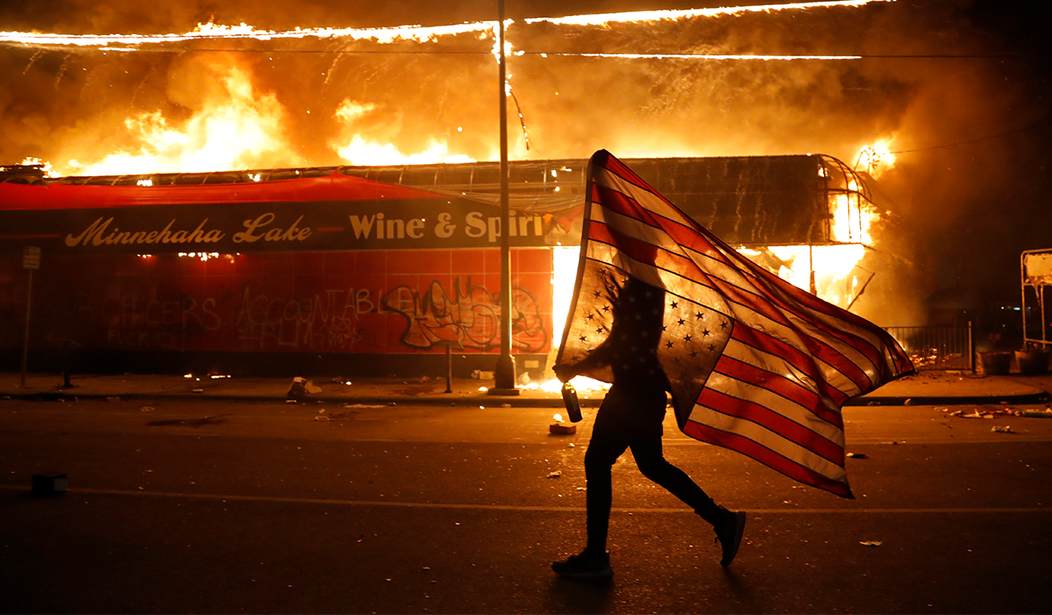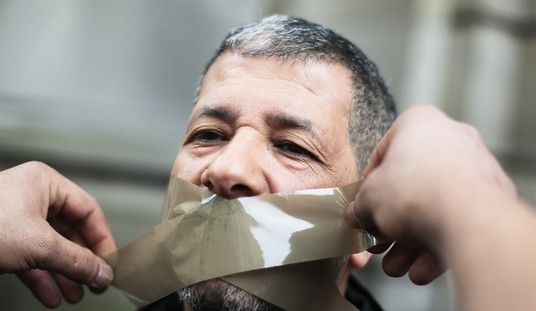When President Donald Trump addressed the nation Monday afternoon, he referenced the Second Amendment when talking about the potential need to call out the military to quell the riots that have spread to virtually every major American city.
“I am mobilizing all available federal resources, civilian and military, to stop the rioting and looting, to end the destruction and arms. And to protect the rights of law-abiding Americans, including your Second Amendment rights,” said the president while speaking in the Rose Garden.
Almost immediately, howls of protest and accusations of thinly veiled racism were thrown at the president for his remarks. Many of the president’s critics accused him of invoking the Second Amendment as a “dog whistle” to white supremacists to let them know the president is on their side.
This reference to the 2nd Amendment is a head scratcher only if you don’t know that 2nd Amendment was in fact created to ensure Southern slaveowners the right to maintain & arm slave patrols to put down insurrections amongst the enslaved. Now he’s invoking agnst their descendants https://t.co/9anFgRjQCm
— Ida Bae Wells (@nhannahjones) June 1, 2020
I think Nikole Hannah Jones is off base here, both in terms of what she believes the president’s motivation was, and her reading of history that presumes the only reason the Second Amendment exists is because of southern slaveowners who wanted to ensure that militias could put down insurrections among the enslaved.
First, let’s talk about the present, and then we’ll revisit the past. The simplest explanation for the president to mention the Second Amendment during yesterday’s speech is because he knows that the issue is vitally important to his base. I don’t think Trump ever loses sight of the fact that we’ll be holding elections in November, and giving a shoutout to the Second Amendment may have been nothing more than a nod to those voters.
It’s also quite possible that Trump has seen the images from around the country of armed Americans protecting their neighborhoods and businesses from looters and rioters. Not just good-old-boy white Americans either. After all, the Second Amendment is a right of the People, not a right of white people.
Arab business owners protecting their businesses in Rochester NY! pic.twitter.com/xWvY5qsaqq
— al.prodigy (@Al__prodigy) June 1, 2020
me on my way to apply for a license to carry pic.twitter.com/355BDnUe7x
— jay (@JAYVERSACE) June 2, 2020
Storefront Sikhs protecting theirs from Antifa and looters. https://t.co/7Rbgkn9ySv
— John Sadden (@Geelivingston) June 2, 2020
If Trump’s comments were meant as a dog whistle, I don’t think many gun owners heard it, because every gun owner and Second Amendment supporter I know wants to see more black and brown gun owners, not less. I could (and should) write an entire column on how gun ownership has introduced me to Americans far different than me who I never would have met without our shared support for the Second Amendment, from Maj Toure of Black Guns Matter to Erin Palette of the Pink Pistols and Operation Blazing Sword. I’m sure that there are some racist gun owners in the United States. I’m also sure that they don’t define or are representative of the Second Amendment community as a whole.
Even if the Second Amendment was only ratified because of white slaveowners in the South, the right to keep and bear arms is clearly not confined to pasty-faced white guys like me. In fact, though, that’s never been the case at all. From the time of our founding, the right to keep and bear arms has been used to further the cause of equality. It’s actually gun control laws that have sought to deprive black Americans, recent immigrants, and others of their Second Amendment rights.
First, let’s acknowledge that Jones is right that some southern slaveowners did want to ensure that they would be able to use the militia to put down slave insurrections and to send out patrols to capture slaves trying to escape captivity. However, it’s wrong to say that was the only impetus behind the push to include a right to keep and bear arms in the Bill of Rights. In 1783, New Hampshire passed a law to abolish slavery in the state. Four years later, during the ratification debates over the proposed Constitution, the state’s constitutional convention proposed an amendment to the document.
Until that point, the Federalists had argued that, since the federal government would have only limited powers, a bill of rights was unnecessary. However, the New Hampshire convention then proposed one, including a guarantee that “Congress shall never disarm any citizen, unless such as are or have been in actual rebellion.”
Other states that had already moved to abolish slavery, including Vermont and Massachusetts, also had debates and discussions about the need to protect the pre-existing right to keep and bear arms in the U.S. Constitution.
Ratification conventions demanded a bill of rights when the federal Constitution was proposed in 1787 without one. In the Massachusetts ratification convention, Samuel Adams proposed “that the said Constitution be never construed to authorize Congress, . . . to prevent the people of the United States, who are peaceable citizens, from keeping their own arms . . . .” In the Pennsylvania convention, the Dissent of the Minority demanded a written bill of rights, including the proposal:
“That the people have a right to bear arms for the defense of themselves and their own state, or the United States, or for the purpose of killing game; and no law shall be passed for disarming the people or any of them, unless for crimes committed, or real danger of public injury from individuals…”
Pennsylvania had abolished slavery even earlier than New Hampshire and Massachusetts, yet there was still a strong desire to see the federal constitution protect the right to keep and bear arms just like Pennsylvania’s state constitution, approved in 1776, did.
That the people have a right to bear arms for the defence of themselves and the state; and as standing armies in the time of peace are dangerous to liberty, they ought not to be kept up; And that the military should be kept under strict subordination, to, and governed by, the civil power.
In 1790, moderates in Pennsylvania managed to replace the 1776 state constitution, which they considered too radical, with one of their own. They even changed the wording of the right to keep and bear arms, but only to simplify it.
The right of the citizens to bear arms in defense of themselves and the State shall not be questioned
The reasons for wanting Constitutional protection for the right to keep and bear arms were as varied as the states themselves. It’s simplistic to the point of fiction to proclaim that the only reason we have the right to keep and bear arms was to put down slave revolts. In fact, as Fordham law professor Nicholas Johnson makes clear in his book Negroes and the Gun: The Black Tradition of Arms (which should be required reading for every Second Amendment supporter and lover of American history), from the earliest days of our nation armed citizens used their rights in defense of black Americans.
Johnson tells the story of Ned and Lucy Page, who were born into slavery but gained their freedom when they were brought to Ohio in the early 1800s. In 1806 the couple were at a tavern near Dayton when “two armed men entered intent on hauling them back south in chains.” As Johnson details:
“Ned Page pulled a pistol from his pack, squared up his sights and threatened to kill rather than be taken. A clutch of friends surrounded him in support. The slave catchers were apprehended and charged with breach of the peace.”
Four years later, in Jefferson, Ohio, a band of “fifteen to twenty colored men armed with guns, pistols, and other weapons” intercepted a group of slave catchers that were bringing a family of fugitives back south. A standoff ensured until a local white attorney made an offer to represent them before a local magistrate. According to Johnson, the judge “rejected the slavers’ claims. In a final insult, the slave hunters were charged with assault. They posted bail and rode off, forfeiting their bond.”
It is absolutely fair to say that some whites used guns to keep black slaves in subjugation, both before and after the Civil War. In the aftermath of Nat Turner’s Revolt in 1833, many southern states passed laws that barred free blacks from bearing arms, or even being taught how to read or write. The Fourteenth Amendment was ratified in part because of the desire to ensure that newly freed slaves could exercise all of their rights, including the right to keep and bear arms. Some southerners bitterly opposed the idea of armed black Americans, and committed atrocities like the Colfax Massacre, where more than 100 black Americans were murdered.
Colfax Parish reflected the political and racial divide in Louisiana. Its 4,600 voters in the 1872 election were split between approximately 2,400 hundred mostly black Republican voters and 2,200 white Democratic voters. One incident however, touched off the Colfax massacre. On March 28, local white Democratic leaders called for armed supporters to help them take the Colfax Parish Courthouse from the black and white GOP officeholders on April 1. The Republicans responded by urging their mostly black supporters to defend them. Although nothing happened on April 1, the next day fighting erupted between the two groups.
On April 13, Easter Sunday, more than 300 armed white men, including members of white supremacist organizations such as the Knights of White Camellia and the Ku Klux Klan, attacked the Courthouse building. When the militia maneuvered a cannon to fire on the Courthouse, some of the sixty black defenders fled while others surrendered. When the leader of the attackers, James Hadnot, was accidentally shot by one of his own men, the white militia responded by shooting the black prisoners. Those who were wounded in the earlier battle, particularly black militia members, were singled out for execution The indiscriminate killing spread to African Americans who had not been at the courthouse and continued into the night.
All told, approximately 150 African Americans were killed, including 48 who were murdered after the battle. Only three whites were killed, and few were injured in the largely one-sided battle of Colfax.
None of these ugly incidents change the fact that the Second Amendment wasn’t written to keep slaves in bondage, even if that happened to be a top priority for some southern slaveholders. Yes, throughout our history some white Americans used their firearms to murder black Americans and terrorize black communities. Black Americans also used their firearms in defense of themselves, both individually and collectively. In fact, throughout our nation’s history the right to keep and bear arms has been incredibly important to the rights of individual black Americans and the broader civil rights movement, and it makes no sense to me to try to rewrite history in attempt to attack the right to keep and bear arms generally.
From Ned Page standing his ground in the early 1800s, Ida Wells urging black Americans to put a Winchester repeating rifle above the fireplace to guard against lynchings in the 1890s, Mississippi farmer and civil rights activist Hartman Turnbow using a rifle to defend his family against white supremacist nightriders in the 1950s, to black business owners in St. Paul protecting their shops against rioters in 2020, the Second Amendment has helped black Americans defend their freedom, protect their families, and live to fight for the rest of the rights accorded to them under our Constitution.









Join the conversation as a VIP Member